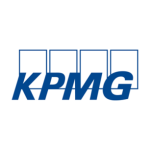China’s economy has been rapidly changing, with advances in the technological level of the economy and increased economic digitalisation. These trends have been further spurred along in the COVID-19 disruption period, as has been the case in other economies.
The Chinese government has recently been taking steps to upgrade the regulatory framework for this environment – many of the latest steps mirror developments in the US and Europe. The notable developments in this regard are as follows.
New anti-monopoly measures for internet platforms
On November 10 2020, China’s State Administration for Market Regulation (SAMR) released the draft anti-monopoly measures for internet platforms. These are designed to curb the dominance of the big internet firms and protect fair competition in the market. The SAMR draft measures are under public consultation until November 30.
Anti-monopoly rules are not new in China. However, this is the first time that the Chinese government has defined anti-competitive behaviours for the online economy. This includes online platforms treating customers differently based on their spending behaviour and data and forcing sellers to sell exclusively on a given platform. Under the draft measures, particular focus is put on horizontal monopoly agreements in the online platform market, which are generally designed to exclude and limit competition – businesses selling through platforms are directed by the measures to report such monopoly agreements to the authorities for investigation.
These moves, directed at China’s technology giants, have parallels with the increasing global trend for regulators to take action against big technology companies, for instance, the investigations into Amazon, Google, etc. launched by authorities in the US and Europe. This being said the Chinese government still provides extensive policy support for the development of the internet and technology sectors.
Export control law
China has also recently introduced an export control law which covers military products, nuclear equipment, and other technologies deemed important for national security. The law comes into effect on December 1 2020 and fills gaps in China’s oversight and administration over technology exports. It also reflects parallel measures adopted in the EU and US in recent times.
Compared with the draft law released in July 2020, technical information and data were also included in the scope of the final law. This means that merger and acquisition (M&A) transactions in connection with Chinese digital economy companies can now fall within the purview of the law. Also, in the technology regulation space, China continues to be actively engaged, alongside the EU, US and others, in the BEPS 2.0 process to update global tax rules for the digital era, for which blueprints were released in October. As elsewhere, Chinese businesses and public authorities are eagerly awaiting the planned finalisation of the rules in mid-2021.
Trade
In another new development, China signed the Regional Comprehensive Economic Partnership (RCEP) agreement on November 15 2020, along with 14 other Asia-Pacific countries, including Japan, South Korea, Australia, New Zealand, Brunei, Cambodia, Indonesia, Laos, Malaysia, Myanmar, the Philippines, Singapore, Thailand and Vietnam.
The RCEP is the largest free trade deal in the world, and will facilitate the ongoing integration of these economies, including in the technology and digital spaces.
Lewis Lu
T: +86 21 2212 3421












